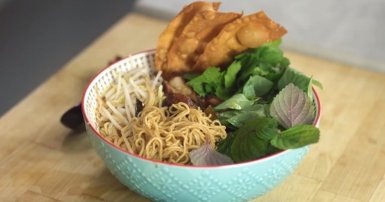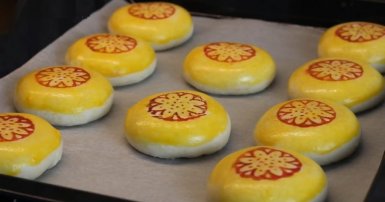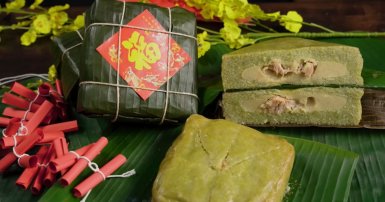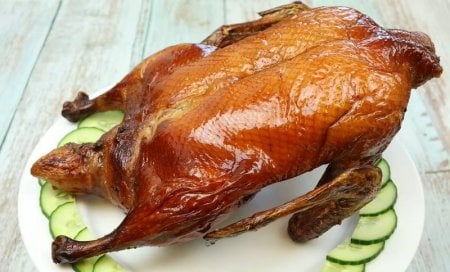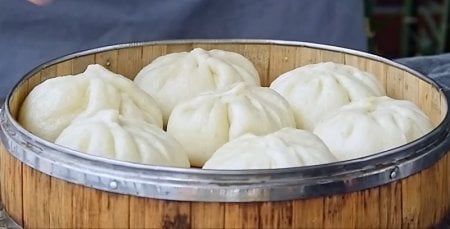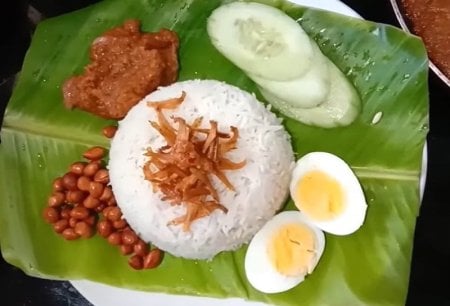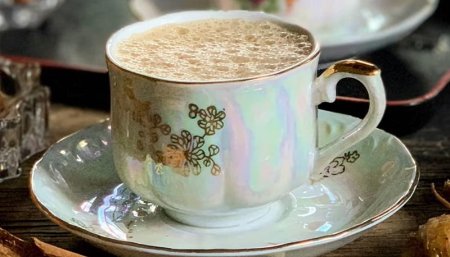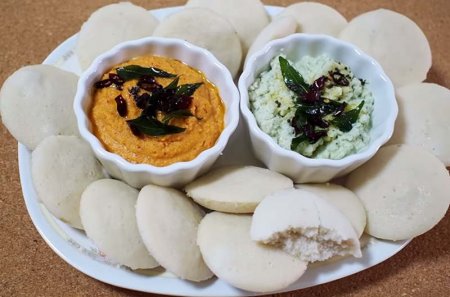Vietnamese cuisine boasts a diverse array of rice dishes, reflecting the country's agricultural abundance and culinary creativity. Pho, a fragrant noodle soup with rice noodles, beef or chicken, and fresh herbs, is a national favorite enjoyed throughout the day. Com tam, broken rice served with grilled meats, pickled vegetables, and fish sauce, is a beloved street food staple. Additionally, Vietnamese cuisine features dishes like banh mi, a crispy baguette filled with various meats and pickled vegetables, and com ga, a comforting chicken rice dish. These rice-based delights showcase Vietnam's culinary ingenuity and the harmonious blend of flavors and textures in its cuisine.
Congee
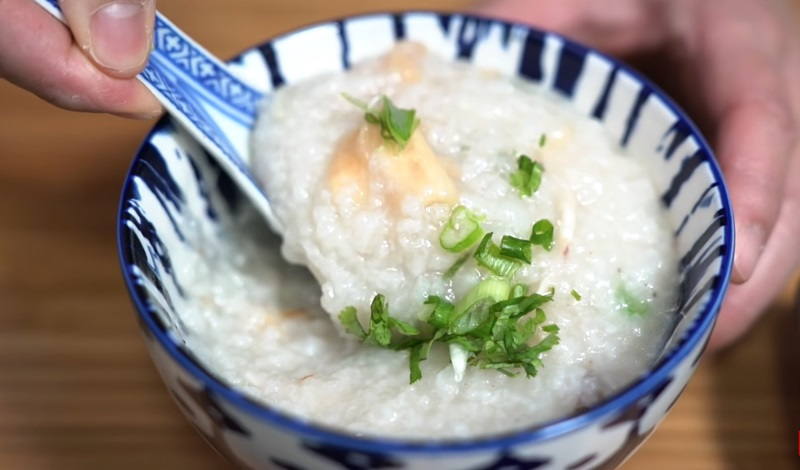
Congee, also known as rice porridge, is a popular Vietnamese rice dish that is enjoyed by people of all ages. It is a simple yet comforting dish made by simmering rice in a large amount of water or broth until it becomes soft and creamy. Congee can be made with different types of rice, such as jasmine or glutinous rice, and can be flavored with various ingredients. Common toppings for congee include shredded chicken, pork, or seafood, as well as vegetables like mushrooms, green onions, or cilantro. It can also be garnished with crispy fried onions, peanuts, or a drizzle of soy sauce for added flavor. Congee is often enjoyed for breakfast or as a light meal, and is known for its soothing and comforting qualities. In Vietnamese cuisine, congee is not only a delicious and nourishing dish, but it is also often used as a base for other dishes. It is commonly used as a soup base, with additional ingredients added to create a more substantial meal. Whether enjoyed on its own or as a base for other dishes, congee is a versatile and satisfying Vietnamese rice dish.
Cơm Tấm
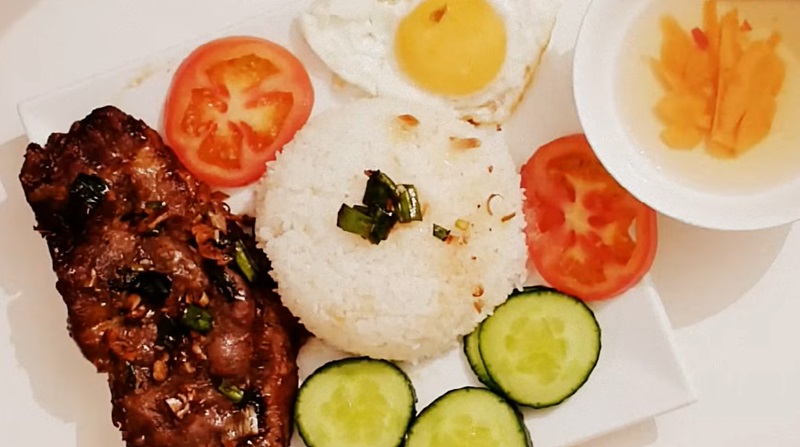
Cơm Tấm, also known as broken rice, is a popular Vietnamese rice dish that originated in southern Vietnam. It is a simple yet flavorful dish. The name "cơm tấm" refers to the broken rice grains used in this dish. These grains are shorter and sturdier than regular rice grains, making them perfect for absorbing the flavors of the accompanying ingredients. The dish typically consists of a bed of broken rice topped with grilled pork, shredded pork skin, and a fried egg. It is often served with pickled vegetables, cucumber slices, and a side of fish sauce for dipping. The combination of flavors and textures creates a delightful culinary experience. Some popular variations include grilled shrimp, steamed pork patty, or even Vietnamese meatloaf. This dish is commonly found in street food stalls, local markets, and restaurants throughout Vietnam. It is a beloved staple in Vietnamese cuisine, offering a taste of the country's rich culinary heritage.
Rice Cake
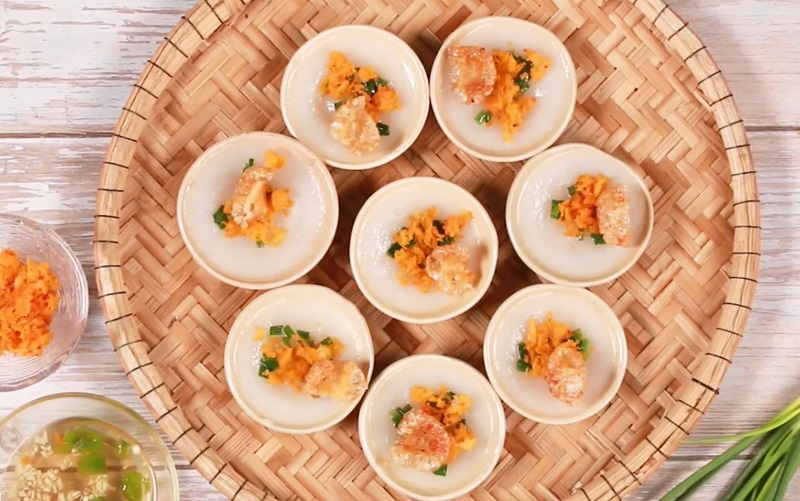
Vietnamese cuisine is renowned for its diverse and delicious rice dishes, and one popular option is rice cake dish, also known as "Banh Day" in Vietnamese. This traditional dish is a simple yet flavorful delicacy that is perfect for breakfast or as a snack. Rice cake dish is made from glutinous rice, which is soaked overnight before being ground into a smooth and sticky paste. The paste is then shaped into round cakes and steamed until cooked. The result is a soft and chewy texture that melts in your mouth. The dish is typically served with a side of sweet and savory toppings. One common variation is to pair the rice cake with a mixture of ground pork, black fungus, and shallots, which is stir-fried until fragrant. Another popular option is to top it with a combination of crushed peanuts, toasted sesame seeds, and sugar, providing a delightful contrast of flavors. The rice cake dish is not only delicious but also visually appealing, with its pristine white color and various colorful toppings. It is a beloved dish in Vietnam, enjoyed by people of all ages. So, if you're looking to try a traditional Vietnamese rice dish, don't miss out on the delectable rice cake dish.
Scorched Rice
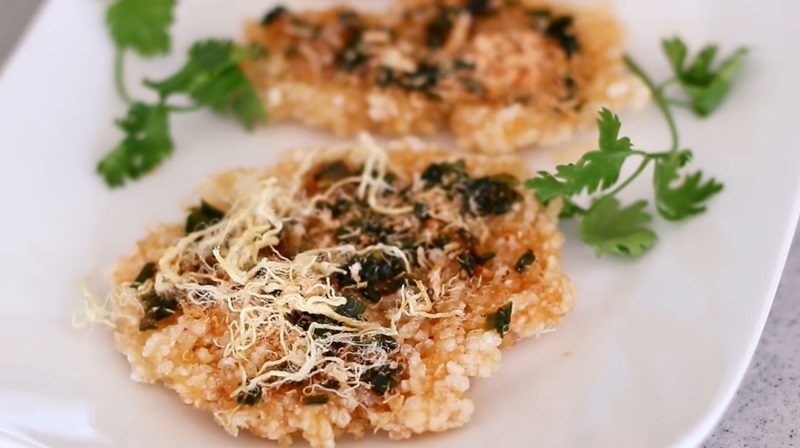
Scorched Rice Dish, also known as Com Chay in Vietnamese, is a delightful rice-based dish that showcases the country's culinary expertise. This traditional Vietnamese dish is made by cooking rice until it forms a crispy golden crust at the bottom of the pot, resulting in a unique texture and flavor. To prepare this dish, Vietnamese cooks start by washing and soaking the rice to remove any impurities. Then, the rice is cooked in a pot until it is almost fully cooked. At this point, the heat is turned up, and the rice is left to cook further until a delicious crispy crust forms at the bottom. The scorched rice is then carefully flipped onto a plate, revealing the beautiful golden crust on top. This crispy layer adds a delightful crunch to the dish. Com Chay is often served with a variety of toppings such as stir-fried vegetables, grilled meats, or savory sauces. One popular variation of Com Chay is "Com Chay Trang," made with white rice, while another version called "Com Chay Dau Xanh" features green beans mixed into the rice for added flavor and texture. Scorched Rice Dish is a beloved Vietnamese delicacy that showcases the country's rich culinary traditions. Its unique combination of textures and flavors makes it a must-try dish for anyone exploring Vietnamese cuisine.
Bánh Xèo
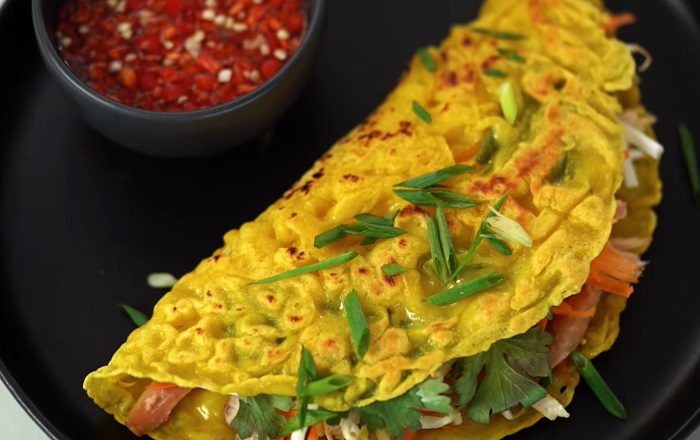
Bánh Xèo is a delicious and popular savory pancake made from rice flour and turmeric powder, giving it a vibrant yellow color. The batter is typically cooked on a hot skillet with a variety of fillings, such as shrimp, pork, bean sprouts, and sliced onions. The name "bánh xèo" actually translates to "sizzling cake," which perfectly describes the sound it makes when the batter hits the hot pan. The result is a crispy and flavorful pancake that is often served with fresh lettuce leaves and aromatic herbs. To enjoy bánh xèo, diners typically wrap a piece of the pancake in a lettuce leaf, along with some herbs, and dip it into a tangy fish sauce-based dipping sauce. The combination of textures and flavors, from the crispy pancake to the fresh vegetables and the savory sauce, creates a delightful taste experience.
Bánh Chưng
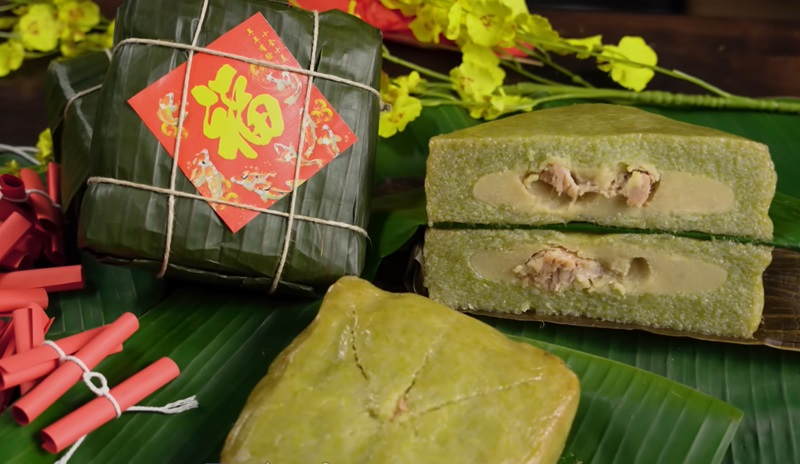
Bánh Chưng is a square-shaped sticky rice cake wrapped in banana leaves, filled with a savory mixture of mung beans, pork, and spices. Bánh chưng is then boiled for several hours until the ingredients meld together and the rice becomes tender. The preparation of bánh chưng is a labor-intensive process that requires meticulous attention to detail. The rice is soaked overnight and then layered with the mung bean and pork filling. The cake is tightly wrapped in banana leaves, which not only add a subtle aroma but also help to maintain the shape of the cake during cooking. Bánh chưng is a symbol of gratitude and respect for ancestors, as it is believed to have originated from a legend about a prince who created the dish to honor his father. Today, it is a staple dish on the Tết table, representing the unity of family and the hope for a prosperous year ahead. The flavor of bánh chưng is rich and earthy, with the sticky rice complementing the savory filling. It is often served with pickled vegetables or dipped in fish sauce for added taste.
Bánh Cuốn
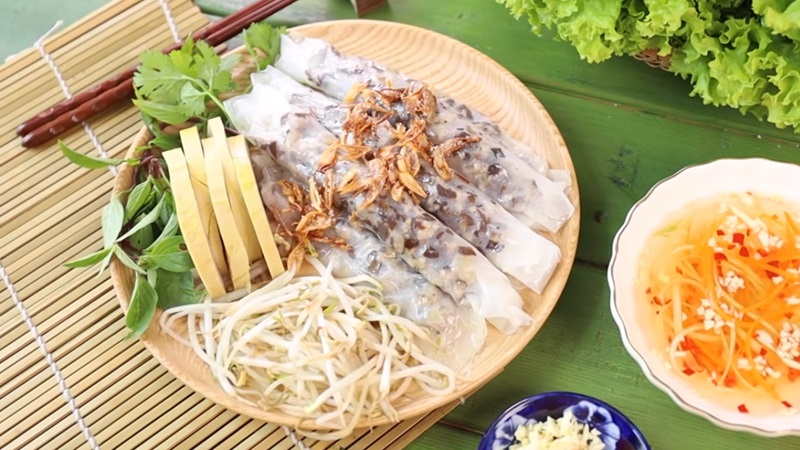
Bánh Cuốn is a traditional Vietnamese dish that consists of delicate, steamed rice rolls filled with a savory mixture of ground pork, mushrooms, and onions. This dish is a popular breakfast option in Vietnam and can also be enjoyed as a light meal or snack throughout the day. The rice rolls used in bánh cuốn are made from a thin, crepe-like batter that is poured onto a cloth-covered steamer. The batter is spread out thinly and steamed until it becomes a translucent, soft sheet. The cooked rice sheets are then carefully rolled up with the filling inside, creating a cylindrical shape. Bánh cuốn is typically served with a side of fish sauce, which adds a tangy and slightly sweet flavor to the dish. Fresh herbs such as cilantro and mint are often used as garnish, providing a fresh and aromatic element to the dish. In some variations, bánh cuốn may also be served with bean sprouts and crispy fried shallots.
Cốm
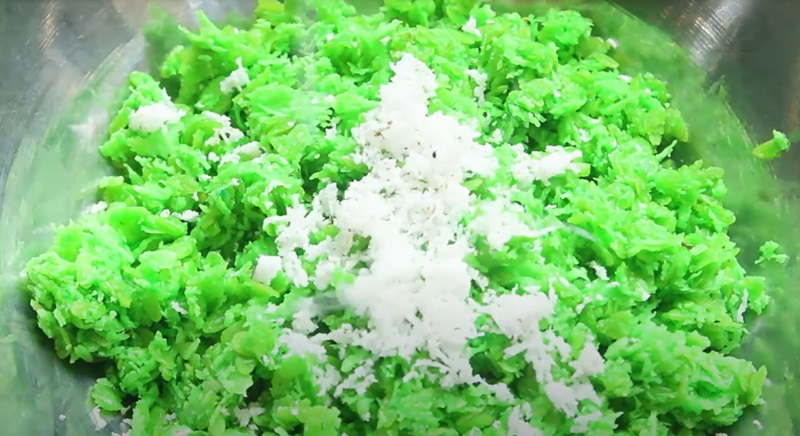
Cốm, a traditional Vietnamese rice dish, is a delicacy that is widely enjoyed during autumn. This dish is made from young, tender green rice grains that have not fully ripened. The process of making Cốm involves harvesting the rice grains at their peak freshness and carefully roasting them over a low fire until they turn a vibrant green color. Cốm has a unique texture and flavor that is both nutty and fragrant. The rice grains are slightly sticky and have a chewy yet tender consistency. The aroma of Cốm is reminiscent of the autumn season, with hints of grass and pandan leaves.
Bánh Bèo

Bánh Bèo, a Vietnamese specialty hailing from Huế in Central Vietnam, literally means 'water means fern cakes' in English. Crafted from a blend of tapioca flour and rice flour, Bánh Bèo is a popular street food. The dish features dried shrimps, rice cake, scallion oil, crispy pork skin, and a dipping sauce. Typically served with nuoc mam, a sauce made from sugar, garlic, fish sauce, Thai chili, and crunchy pork belly strips, bánh bèo offers a delightful burst of flavors.
Xôi
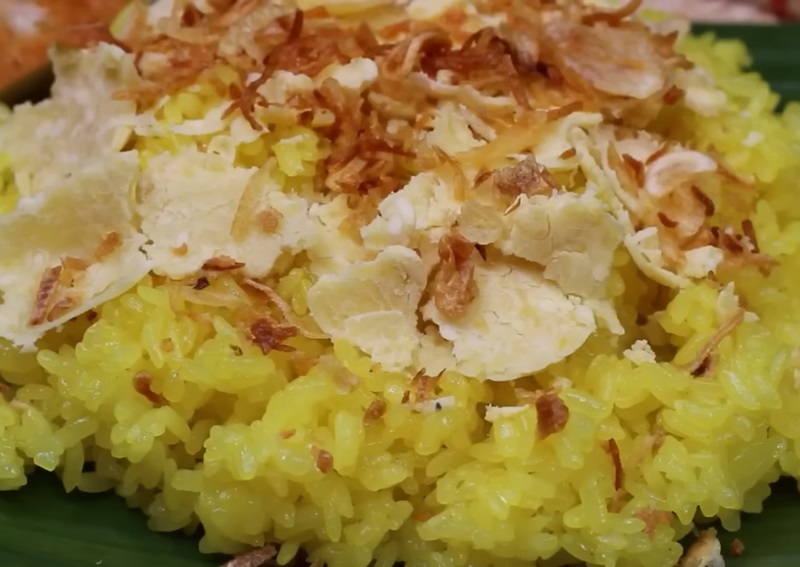
Xôi is a traditional Vietnamese rice dish that is a staple in the country's cuisine. It is made from glutinous rice, also known as sticky rice, which is cooked until it becomes soft and sticky in texture. Xôi can be served as a main dish or as a side dish, and it is often enjoyed for breakfast or as a snack throughout the day. There are various types of xôi, each with its own unique flavors and ingredients. Some popular variations include xôi gấc, which is made with the vibrant red gấc fruit, giving the rice a beautiful color and a slightly sweet taste. Xôi lá cẩm is another popular option, made with black sticky rice and pandan leaves, resulting in a fragrant and visually appealing dish.
Sticky Rice in Bamboo
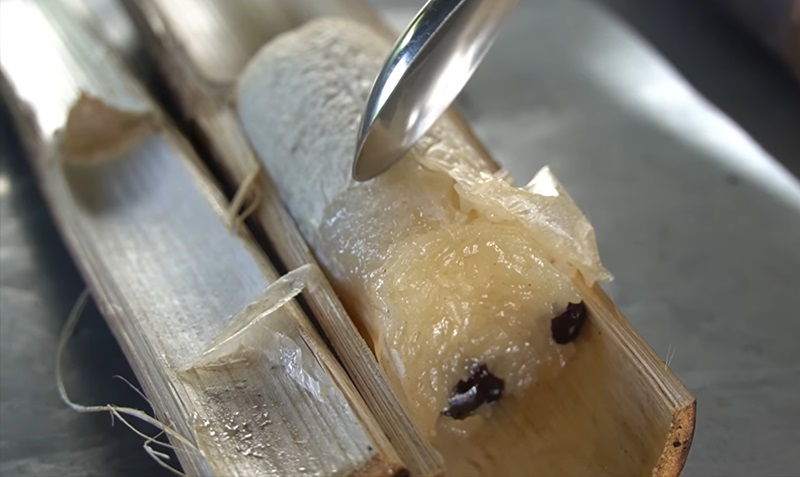
Vietnamese cuisine is known for its diverse and flavorful rice dishes, and one such dish that stands out is the Sticky Rice in Bamboo Dish. This unique and visually appealing dish is a favorite among locals and visitors alike. The preparation of this dish begins with glutinous rice, which is soaked overnight to achieve the perfect texture. The rice is then mixed with various ingredients such as grated coconut, mung bean, and a touch of salt to enhance the flavor. The highlight of the dish is the bamboo container in which the rice is cooked. The bamboo adds a distinct aroma and imparts a mild smoky flavor to the rice, making it even more delightful to the taste buds. Once the rice is cooked, it is served in small portions, wrapped in a banana leaf, which not only adds a pleasant fragrance but also keeps the rice warm. The combination of the sticky rice, coconut, and mung bean creates a harmonious blend of sweet and savory flavors that are simply irresistible. Sticky Rice in Bamboo Dish is often enjoyed as a snack or dessert, and it is commonly found in street food stalls and markets across Vietnam. So, if you ever have the chance to try this delectable dish, don't miss the opportunity to savor the unique flavors and textures that make it a true Vietnamese culinary delight.
Cơm Rượu
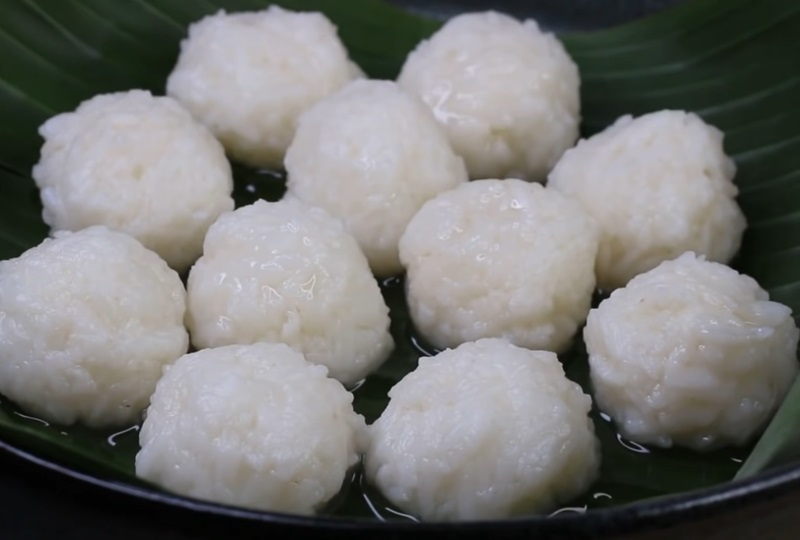
Cơm Rượu, also known as fermented rice, is a unique and traditional Vietnamese dish that is often enjoyed during special occasions and festivals. It is made by fermenting cooked glutinous rice with yeast for a period of time, resulting in a slightly sweet and tangy flavor. To prepare cơm rượu, the glutinous rice is first soaked and cooked until soft. Once cooked, it is cooled down and mixed with yeast, which kickstarts the fermentation process. The rice is then left to ferment for several days or even weeks, depending on the desired taste and texture. During the fermentation process, the rice develops a distinct aroma and a slightly alcoholic taste, similar to that of rice wine. The texture becomes sticky and slightly chewy, making it a delightful experience to eat. Cơm rượu is often served as a dessert or snack. It can be enjoyed on its own or paired with various toppings such as coconut, sesame seeds, or roasted peanuts to enhance the flavors and add a crunchy texture.
Bánh Tráng Trộn

Bánh Tráng Trộn, also known as Vietnamese rice paper salad, is a popular and delicious street food dish in Vietnam. It is a refreshing and flavorful combination of various ingredients that are mixed together to create a unique and satisfying taste. The dish starts with bánh tráng, which is a thin and translucent rice paper that is typically used for wrapping spring rolls. The rice paper is cut into small pieces and then tossed with a variety of ingredients. These may include julienned vegetables such as carrots and cucumbers, fresh herbs like mint and cilantro, bean sprouts, boiled quail eggs, and sliced grilled pork or beef. To enhance the flavors, a tangy and savory dressing is added. This dressing is a mixture of fish sauce, lime juice, sugar, garlic, and chili. The dressing gives the dish a perfect balance of sweet, sour, and spicy flavors.
Cơm Hến
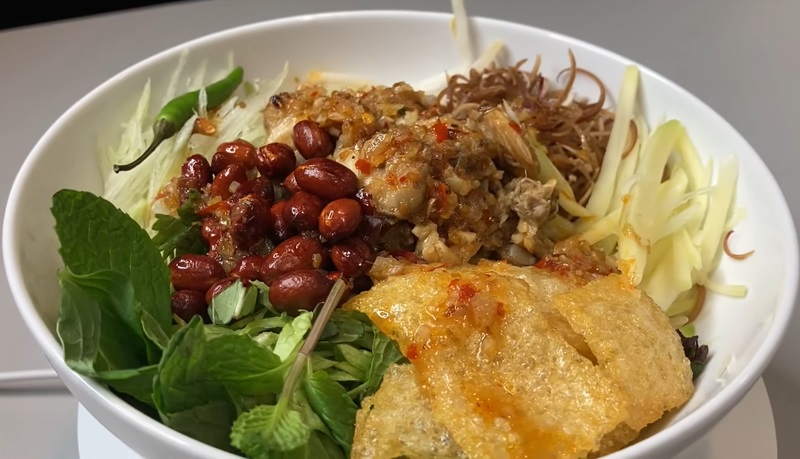
Cơm Hến is a traditional Vietnamese rice dish that originates from the central region of the country, particularly in the city of Huế. It is a delightful combination of steamed rice and baby clams, seasoned with a variety of herbs and spices. To prepare cơm hến, the baby clams are first cleaned and cooked until they open up, releasing their flavors. The rice is then steamed to perfection and placed in a bowl. The cooked clams are then placed on top, along with a medley of fresh herbs such as mint, coriander, and basil. Cơm hến is typically served with a tangy and flavorful sauce made from fish sauce, lime juice, chili, and garlic. This sauce adds a deliciously zesty kick to the dish, complementing the natural sweetness of the clams.
Bánh Dúc
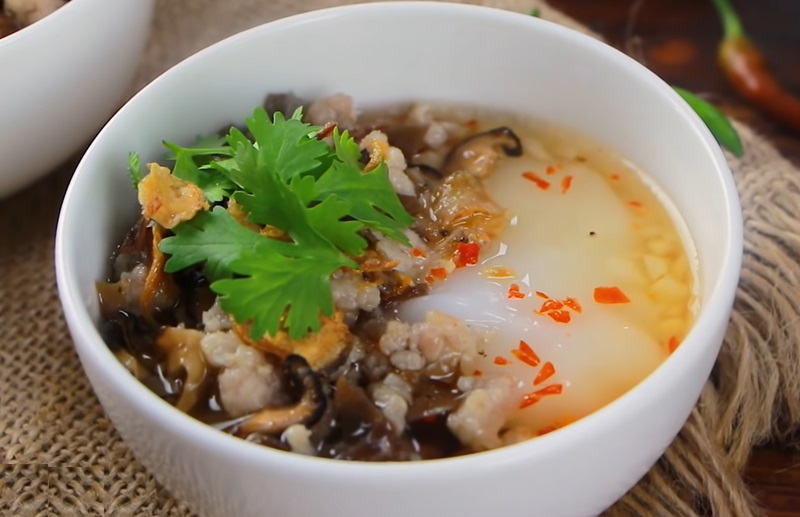
Bánh Dúc is a type of Vietnamese cake, with distinct variations in the north and south. In northern Vietnam, it is crafted from non-glutinous rice flour or corn flour, presenting as a soft, white cake. Typically adorned with savory elements like ground pork, fried onions, grilled shrimp (tôm chấy), sesame seeds, soy or fish sauce, and peanuts, it may be enjoyed alone or served hot with steamed meat or mushrooms. In the southern Vietnam, Bánh Dúc takes a dessert form, using non-glutinous rice flour to create green, gelatinous blocks through boiling and cooling with Pandanus amaryllifolius leaf extract. These blocks are then cut into a jelly-like sheet for consumption.
Bánh Căn
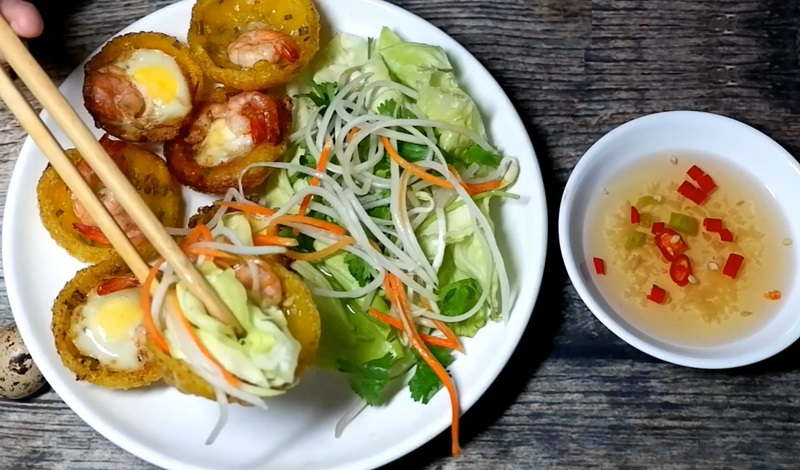
Bánh Căn, translating to "mini cake" in Vietnamese, is a pancake-like delicacy crafted from rice flour, water, and turmeric. Cooked in a special cast-iron or traditional clay pan with round molds, it's a Southern Vietnamese favorite. Toppings such as shrimp, pork, and eggs enhance its flavor. Prepared by pouring rice flour batter into a charcoal-fired pan, these mini cakes are adorned with shrimp, scallions, pork, diced fried bread, quail eggs, or other regional ingredients. Typically served with various dipping sauces like fish soup, fermented fish sauce, mixed fish sauce, or meatball sauce, accompanied by chả, pounded chilis, minced mango, fresh herbs, and leafy vegetables for wrapping.
Bánh Giò
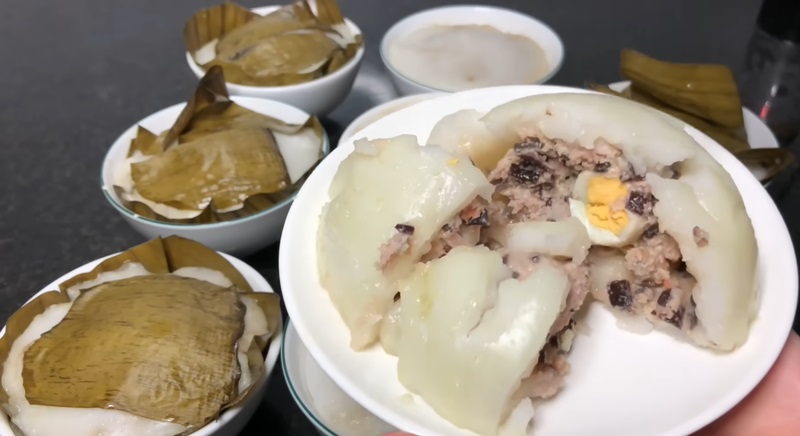
Bánh giò is a popular Vietnamese rice dish that is loved for its simplicity and delicious flavors. It is a steamed rice cake made from a combination of rice flour and tapioca starch, filled with a savory mixture of ground pork, wood ear mushrooms, and shallots. The filling is seasoned with fish sauce, pepper, and other spices, giving it a rich and aromatic taste. The preparation of bánh giò involves wrapping the filling in a thin layer of rice dough and then steaming it until it becomes soft and slightly translucent. The end result is a soft and chewy rice cake with a delicate texture that pairs perfectly with the flavorful filling. Bánh giò is traditionally served with a side of sliced cucumbers, herbs, and a dipping sauce made from fish sauce, lime juice, sugar, and chili.
Bánh Dẻo
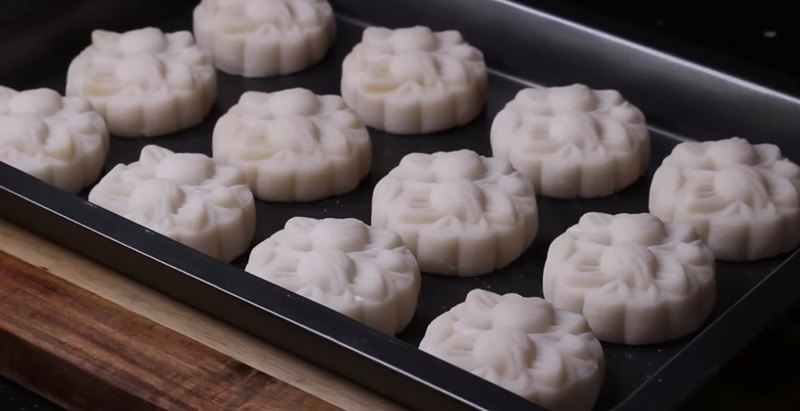
Bánh Dẻo is a traditional Vietnamese rice dish that is popularly enjoyed as a snack or dessert. This delightful treat is made from glutinous rice flour, which gives it a unique chewy texture. The dough is typically filled with a variety of ingredients such as mung bean paste, shredded coconut, or roasted peanuts, enhancing the flavors and adding a delightful contrast to the soft rice dough. To prepare Bánh dẻo, the glutinous rice flour is mixed with water to form a smooth and pliable dough. The dough is then rolled out into small discs and filled with the desired filling. The filled dough is then carefully folded and sealed, creating a small pouch. Once assembled, the Bánh dẻo is steamed until cooked, resulting in a soft and slightly sticky texture. The final product is often served with a sprinkling of sesame seeds or a drizzle of coconut milk for added richness.
Bánh Lá
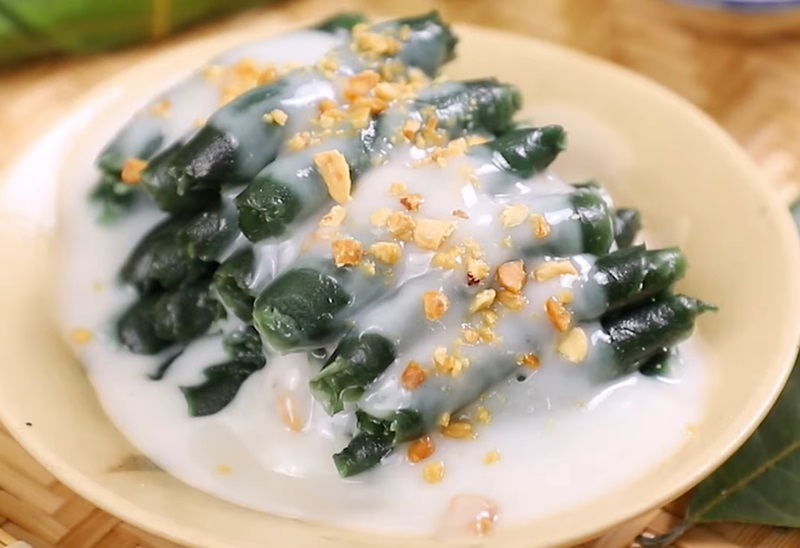
Bánh Lá is a popular Vietnamese rice dish that is both delicious and visually appealing. Bánh lá, which translates to "leaf cake," is made by wrapping a mixture of rice, minced pork, mushrooms, and spices in banana leaves and steaming it until cooked through. The dish has a unique aroma and flavor that comes from the combination of the fragrant banana leaves and the savory filling. The rice used in bánh lá is typically sticky rice, which gives the dish a chewy texture and helps to bind the ingredients together. Bánh lá is often served as a main course or as part of a larger meal. It is commonly enjoyed with a side of fresh herbs, lettuce, and dipping sauces such as nuoc cham or soy sauce.


